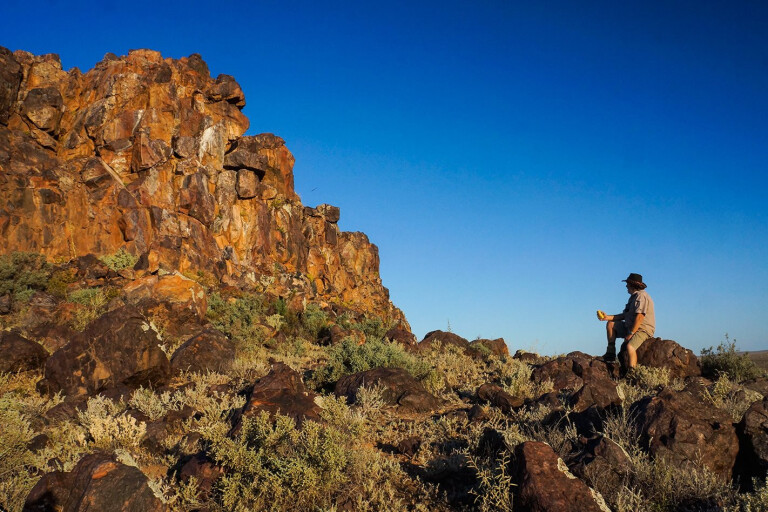
The red dirt road headed north across saltbush plains that make up the main landform in this semi-arid part of Australia, situated between Peterborough, on the edge of the Flinders Ranges in South Australia, and Broken Hill, tucked into the lower, sparser Barrier Ranges in far-western New South Wales.
A few low hills, startlingly obvious above the plain, were scattered across all points of the compass and were tinged blue by distance and the warm, still air that surrounded us. Directly to our north, the Olary Ranges were just low, rounded, rocky hills; their status as some of the oldest rocks in Australia reinforced by the fact that their sharp edges and rocky surfaces had been softened by space and time.
Just off to the west of the road, as we headed north across the saltbush plain, the entry to the White Dam Gold Mine was passed with some workings being seen in the distance. Everything looked a bit quiet when we went by and while this small mining venture has been a success as far as gold production has been concerned, exploration work has been continuing to find more reserves.
 Quickly after the White Dam access track, you rattle across the grid that is the boundary to the Boolcoomatta Reserve. This reserve is run by Bush Heritage Australia and is one of the few private conservation reserves that allows the general public to enter, drive around and camp; hence our interest in the place.
Quickly after the White Dam access track, you rattle across the grid that is the boundary to the Boolcoomatta Reserve. This reserve is run by Bush Heritage Australia and is one of the few private conservation reserves that allows the general public to enter, drive around and camp; hence our interest in the place.
Boolcoomatta is about 630sq km in size and up ’til 2006 it was a working sheep property; although, it had been conservatively grazed for nearly 150 years before then. In fact, Boolcoomatta got a mention in one of CJ Dennis’ poems, A Song of Rain, written around 1915.
Apart from the saltbush plains, there are open mulga woodlands, bullock bush scrubland and, along the creeks, hardy red gums shade natural waterholes. Along with red kangaroos, eastern grey kangaroos, euros and Gould’s wattled bats, there are rare mammals here, including yellow-footed rock wallabies and the dusky hopping mouse.
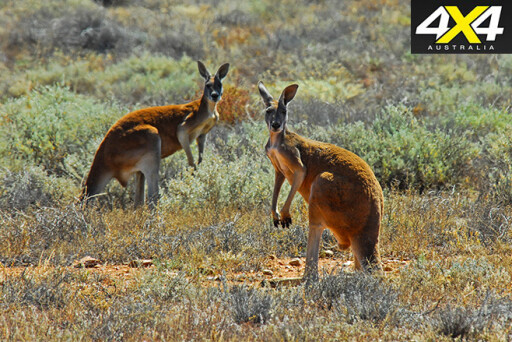 All up there are 118 species of birds, including pink-eared ducks, spotted harriers, plains wanderers, regent parrots, blue-winged parrots, elegant parrots, crimson chats, orange chats, white-fronted chats and the nationally vulnerable, slender-billed thornbill, along with a heap more.
All up there are 118 species of birds, including pink-eared ducks, spotted harriers, plains wanderers, regent parrots, blue-winged parrots, elegant parrots, crimson chats, orange chats, white-fronted chats and the nationally vulnerable, slender-billed thornbill, along with a heap more.
For this journey, we checked into the homestead and met the caretakers, as the mangers were away for a few days. The old homestead buildings and nearby shearing shed, both built from local stone, are a delightful relic from the past and are worth investigating. The managers’ quarters are in really good condition and can be rented out.
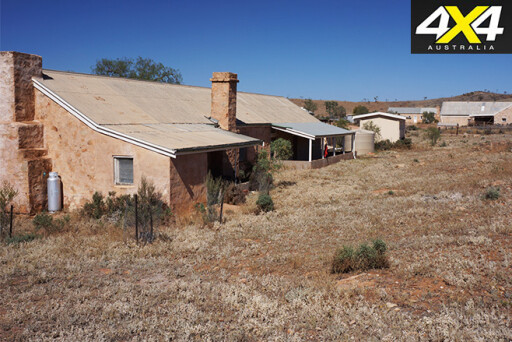 With directions from the caretakers, we headed to the camping area to check it out and we were pleasantly surprised, even though it was small, at its location and bush-bred facilities. With no fences between the wildlife and us, we had ’roos and emus wandering through our camping area in the evening and early morning, while the birdlife in the morning was enchanting.
With directions from the caretakers, we headed to the camping area to check it out and we were pleasantly surprised, even though it was small, at its location and bush-bred facilities. With no fences between the wildlife and us, we had ’roos and emus wandering through our camping area in the evening and early morning, while the birdlife in the morning was enchanting.
There are a couple of designated self-drive routes on the property, which will keep you busy for a couple of days. We found the Western Hills Tour to be the most interesting and spent a lot of time wandering around the old mining sites that can be found on this leg.
Also on this route is Dome Rock, a low but obvious sheer rock outcrop crowning a low-rounded rocky hill. It’s a great spot to enjoy a beer or wine at sunset.
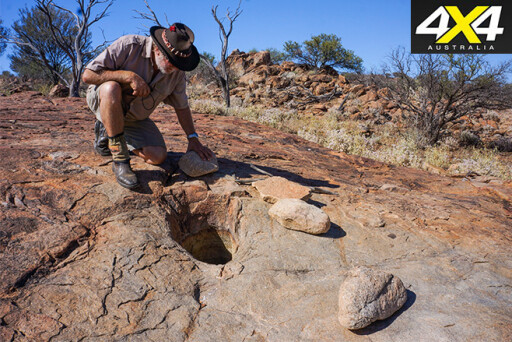 One thing for sure is you will see big mobs of ’roos and wandering flocks of emus wherever you go, but the delightful yellow-footed rock wallabies confine themselves to the most rugged country and take a bit of finding. Still, most people who love our desert and semi-arid country will enjoy a couple of days here.
One thing for sure is you will see big mobs of ’roos and wandering flocks of emus wherever you go, but the delightful yellow-footed rock wallabies confine themselves to the most rugged country and take a bit of finding. Still, most people who love our desert and semi-arid country will enjoy a couple of days here.
Adjoining the west of the reserve is the little-known Bimbowrie Conservation Park that covers some 720sq km and was only proclaimed in 2010 with little fanfare. We knew nothing about it until we visited Boolcoomatta and since then a management plan for the park has come to light, with access to much of the park allowed to independent and self-sufficient travellers.
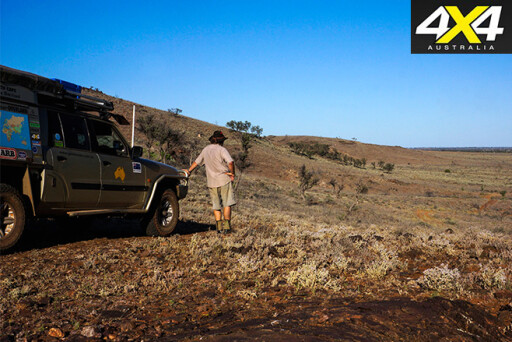 Our travels didn’t include this park… but we’ll be checking it out soon! BBoolcoomatta is situated about 100km west of Broken Hill and about 26km north of Mingary on the Barrier Highway. Bookings are a must.
Our travels didn’t include this park… but we’ll be checking it out soon! BBoolcoomatta is situated about 100km west of Broken Hill and about 26km north of Mingary on the Barrier Highway. Bookings are a must.
Info and contact
Boolcoomatta is situated about 100km west of Broken Hill and 26km north of Mingary on the Barrier Highway. The campsite is situated south of the homestead, (at 31°59’5.5”S 140°30’56.4”E) and is open from April to October each year.
Bookings are essential. Visitors must be completely self-sufficient. The area is remote and little travelled. The best time to visit is winter or early spring.
To find out more
Visit: www.bushheritage.org.au/our_reserves/state_southaustralia/reserves_boolcoomatta
Email: info@bushheritage.org.au
Call: 1300 628 873
Click here to explore more of South Australia.

COMMENTS